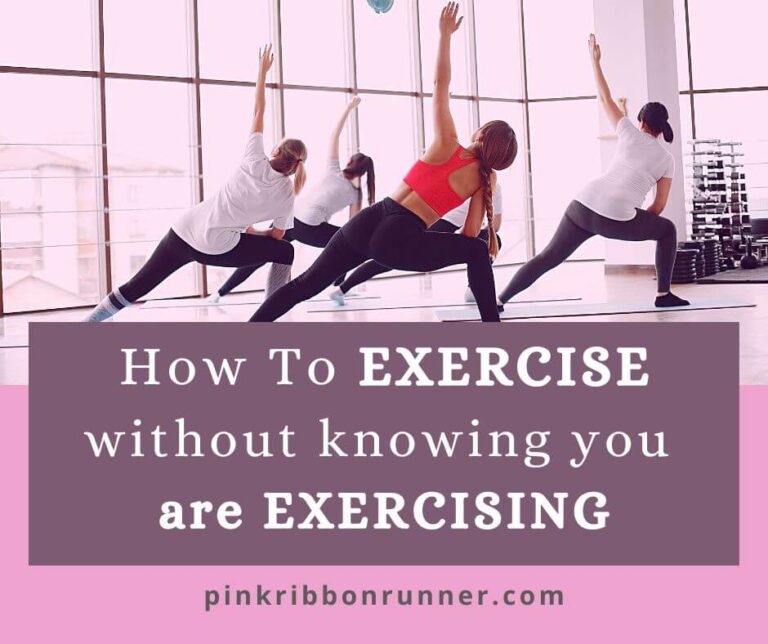How to Find Your Motivation to Exercise
Are you struggling to find motivation to run or exercise? You are not alone. Let’s look at how we can find our motivation to run and workout. Let’s unleash your inner athlete.
This post contains affiliate links. As an Amazon Associate, I earn from qualifying purchases.
If you lack motivation to exercise, you aren’t alone
Approximately 50% of people starting an exercise program will drop out within the first 6 months. There are numerous factors on why this is. Studies show complex relationships between exercise program drop-out rates and lower socioeconomic status, obesity, history of inactivity, and loneliness.
However, these aren’t the only factors involved, of course. Some people think they have no time to exercise. Maybe the person hasn’t found an exercise they enjoy doing. Perhaps they don’t have clearly defined goals, so cannot see progress. There are many reasons people don’t start or drop out of exercise programs.
Regardless, many, many people quit exercising before true improvements are made.
And this makes me sad.
Given the large amount of scientific research data on the health benefits of regular exercise, why don’t people just do it? What motivates people to start and to continue on with an exercise program?
What we think, we do
Other research in this area tells us that the answer lies in our own heads. If we think of ourselves as being able to accomplish the goals we establish for ourselves, we will accomplish them.
If we don’t think we have the ability to exercise, then we won’t. But we can also turn that thought around. If we think we can , then we most likely will.
Whether you think you can, or you can’t … you’re right.
— Henry Ford —
Why don’t we think we can do it?
While all it sounds so simple to say it is all in our heads, in reality it is much more complex. Our perception of our inability to be athletic can be deep-seated.
For example, psychology research tells us that most people with obesity have poor self-esteem. This is self-defeating when it comes to commitment to a weight loss and exercise program. If we don’t think we can do the exercises, then we won’t be able to follow an exercise program. So a poor self image gets in the way of self improvement.
It is a vicious cycle of negativity. We don’t think we can, so we don’t, which makes us feel even worse.
When we finally get the motivation to start, we struggle with the workouts. This struggle only confirms our thoughts that we can’t do it. So, we quit. We feel bad that we quit and it eats away at our self image.
I have been in this negative place many, many times. And if you are reading this article, I will bet so have you.

Social stigma gets in the way too
All this is also strengthened by society’s judgments. It is made worse by a strong social stigma of “thin is in” and “fat is bad”. Certainly, society’s judgement is that obese people are not athletes and cannot exercise, especially run.
This is further internalized as “I am fat, I cannot run”. This is only in our heads and is not physiologically true. Our bodies can run, even if we are overweight.
We may also feel self-conscious of our appearance because of societies view of obesity. So, this stops us from going to the gym or exercising where people can see us.
Maybe we feel others will stare and judge, perhaps even laugh at us. Workout DVDs and Apps are very popular for this reason. They allow us to exercise alone, so that others won’t see us. And while this may give us a good start to an exercise program, science tells us that loneliness is a large reason that people stop working out.
A healthy social support network is important for sustained exercise.
Related Articles:
12 Benefits of Bodyweight Exercises Done At Home
15 Fabulous Ways to Stay Active Indoors
7 Tips to Help Busy Parents Schedule Exercise
How to Exercise Without Knowing You are Exercising
We need to start to think of ourselves as athletes!
So, how do we stop this negative, self-defeating way of thinking and start to believe we can be athletes?
The key to an athletic self-image is to understand and internalize that exercise is worth it, that we are worth it and that it is possible for us to exercise.
We CAN do this!
We need to be honest about our current abilities.
But we need to start at the level we are at right now and be realistic in our goals. We can’t worry that the others are lifting twice as much weight or are running twice as fast. We need to be honest about our current abilities.
If we are not honest, we cannot set realistic goals. We need realistic goals to succeed. If a goal is too far out of reach, then it will zap our motivation.
Exercise should be viewed as a gradual process. We need to build up slowly and improve gradually. It is a continuous climb.
Setting up smaller, baby-step goals can help us succeed.
However, to do this we have to be honest about our current abilities.
For example, if you haven’t yet run 5 km, you won’t be able to qualify for the Boston Marathon next year. So, start with 5 km and see how that goes first.
Start to believe we CAN do it!
After we set a realistic goal, then we need to tell ourselves that we CAN achieve our goals. We need to keep telling ourselves this over and over and over again. Internalizing it and believing in ourselves is key to achieving the goals we set.
And I will tell you that YOU CAN DO IT.
If you were honest with yourself and you have picked a realistic, baby-step goal, you most certainly can do it. So, believe it! With my whole heart, I believe it. So, why don’t you?
Our bodies will respond to the workouts
And here is why I wholeheartedly believe we can all do it!
As we keep exercising, our bodies adjust to the work and get stronger, faster and go longer. Muscles can’t help but get stronger. It is what they do. The more we work a muscle, the stronger it gets.
The heart is a muscle. So if we run and do cardio, our hearts will get stronger.
The diaphragm is partly muscle. As we run or workout, our diaphragms get stronger and our breathing becomes easier.
And as our muscles get stronger, we are able to run faster, workout stronger and longer. It is a gradual process.
Your body can stand almost anything. It’s your mind that you have to convince.
— Vincent Lombardi —
Exercise is hard, but it is possible.
Exercise is hard at first, yes. If we are being honest with ourselves, then we need to also admit that exercise is hard.
It hurts. It is uncomfortable. We struggle. This is NORMAL.
And you know what…even the fastest and strongest of athletes, even the elite athletes struggle. The difference between them and us? They don’t give up. Athletes push themselves to greatness. They hurt. They are uncomfortable and they struggle. But they keep going. They believe they can do it. They understand that if they keep going they will achieve their goals.
And there is no reason we can’t achieve our goals too.
What seems impossible today will one day become your warm-up.
— unknown —
Exercise can be self-rewarding
As we improve, our abilities are confirmed. This strengthens our self perception and provides us with positive feedback.
We begin to realize that we CAN do this.
This is why it is so important to be honest with ourselves and set realistic and achievable short term and long terms goals.
When we achieve our goals, we affirm that we are capable. We set ourselves up for success.
We all have dreams. But in order to make dreams come into reality, it takes an awful lot of determination, dedication, self-discipline, and effort.”
— Jesse Owens —
So how do we motivate ourselves to start and continue?
10 Practical Tips to Motivate Yourself to Exercise
What I have been telling you makes sense, right? Well how do we actually go about putting it int action? Here are 10 tips on how to take action and workout.
1. Find your why.
Why do you want to exercise? It could be to improve your health, to be and example to your children, or to simply feel good.
Write your ‘why’ down. Post it where you can see it every day. Remind yourself of this often.
2. Pick one realistic small goal.
Remember to be honest with yourself. Pick something you can achieve within a few weeks. Maybe that is to run for 2 minutes? Maybe that is to lift a 5 pound weight 10 times? It shouldn’t be a big goal. You must believe you can do it.
3. Tell yourself you can do it.
Look in the mirror and tell yourself you can do it. Tell yourself this often.
4. Don’t even look at what others are doing.
Don’t compare yourself to others. You will ALWAYS be able to find people who are stronger and faster. It doesn’t matter what they can do. It only matters what you can do. So focus on yourself!
5. Buy yourself some new workout clothes
Treat yourself and buy yourself that new technical tee or tights. Looking good and feeling good is motivating. Investing a little bit of money into an activity is also motivating.
So, go ahead and buy yourself that workout gear.
6. Take a deep breath and just do it!
You have to start to continue. So, just start. Get out of your head and do it. This is the hardest part, so put on your workout gear, and just start.
7. Log your workout.
This helps make you accountable to yourself. Looking back at past workouts will tell you how far you have come. You can see hard data about your improvements.
8. Schedule your workout with a friend
Workout buddies are the best. They hold you accountable, keep you entertained and encourage you.
If you don’t have a friend doing the activity you want to do, then join a gym or take a class. You will meet people who like to do the same exercise as you.
9. Celebrate your successes
When you accomplish your goal, reward yourself. Be proud of your achievement. Tell the world you did it. You may just motivate others to try for themselves. How cool is that!
10. Do it again! And again!
Don’t stop now! Remember your why! Pick another small goal. Write it down. Tell yourself you can do it. Take a deep breath and do it. Log your workout. Celebrate your success. Then do it all over again, and again. This is the way you stick with it long term, keep getting better and reach those bigger goals you may have.

We can all be athletes if we truly believe we can, work for it and never give up!
If you want to start running, check out this How to Start Running guide.












This is such a great post. It applies not only to running but everything we do in life. I especially love the idea of finding your why.
Something I most definitely needed to read! Thank you.
I especially appreciate that you mention being honest about our abilities. I had been to so many fitness classes where the instructor would bully you into pushing too hard thinking they’re doing you a favor. Then I’d pass out or throw up and then never be able to show my face there again. Real productive, instructor! So thank you for mentioning that in this post! 🙂
I am sorry you had this experience. It shouldn’t and doesn’t have to be like this. Yes, you should push yourself to improve. But you do not need to push yourself to the point of passing out or throwing up. That isn’t necessary and is counterproductive. You need to enjoy exercise, otherwise you will dread it and avoid it.
You know what I love about this it reminds me of my national swimming days. We had a lot of lower income kids participate with us and you’re so right about the socio-economic backgrounds affecting the! Love the article and really appreciated that you show the importance of a schedule among other key points!!
These are helpful, realistic tips. I’m starting over with exercise as I just had a baby, and it feels a little overwhelming! But I know I’ll get there slowly!
You truly are an inspiration Patricia. You have so much understanding and experience on this topic. Love that you addressed this “Social stigma gets in the way too” …
Great information and excellent tips! You are so right about how society judges overweight people and thus making it harder to start and continuing to exercise. One possible option is to exercise at home. You can even run at home with a YouTuber!
what a great article on motivating people to exercise!
such an informative and detailed post.
so much helpful.
thanks for sharing!
As kid I grew up thinking an athlete was only someone that won awards ! Silly now. With maturity comes wisdom. Thanks for an enlightening, informative and well written article.
Thank you for your comment. Anyone can be an athlete if they believe they can.